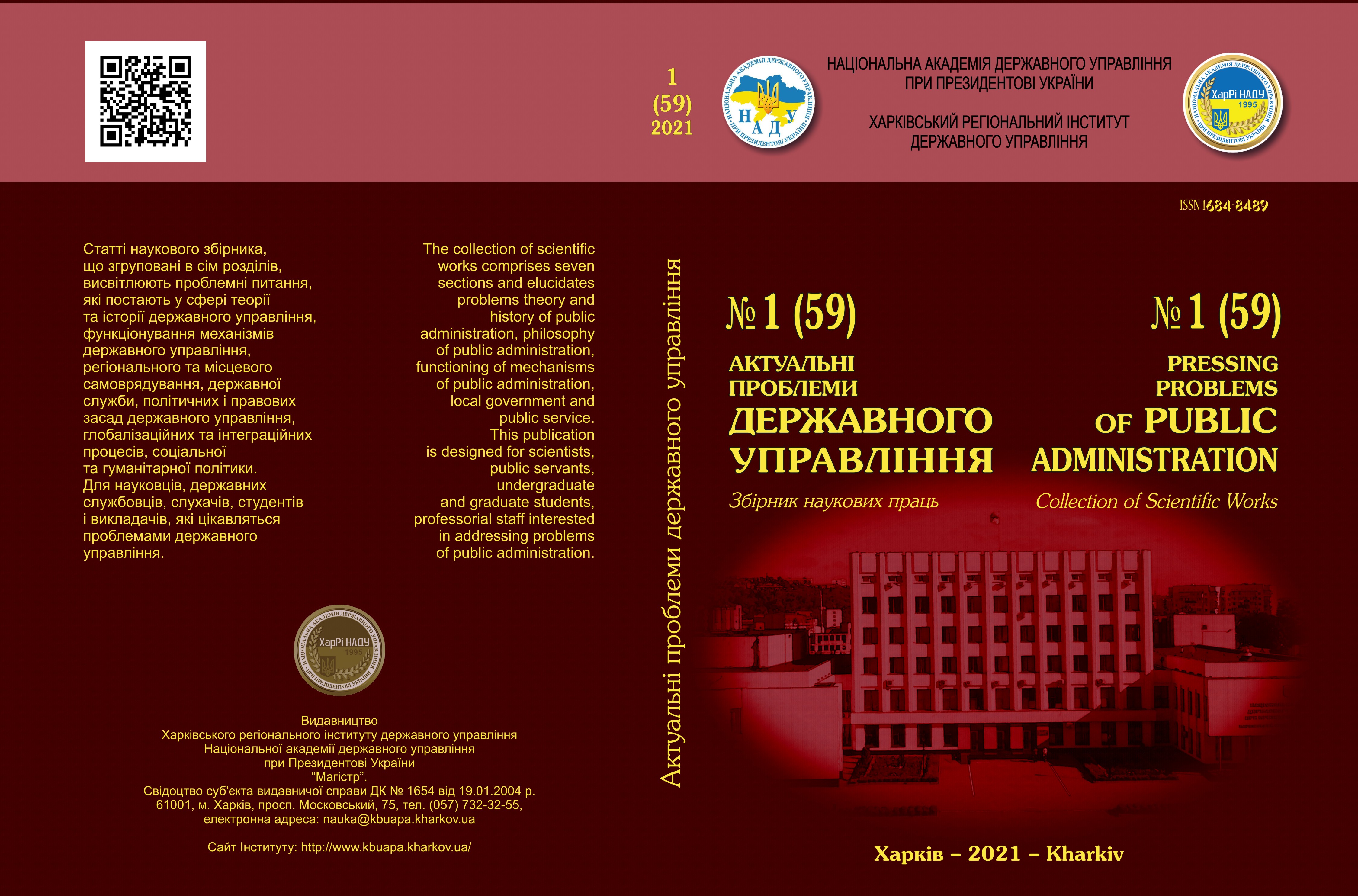FIRST STEPS OF NEWLY APPOINTED LEADER IN MANAGING STAFF OF PUBLIC SPHERE
Abstract
Appointment to the post of a “new” manager of a work team can be performed in two ways: the first option – a person is transferred to a position from a different unit; while the second way – he or she is a member of the same team, a former colleague of his/her present subordinates.
The first step of a newly appointed manager should be determining the scope of their actual rights, duties, resources, and boundaries of authority. The formal rights and responsibilities are specified in a job description; however, in reality they can be completely different.
In order to enhance the authority of a new leader, it is necessary to familiarize the work team with the motives of his/her taking the post and the goals that he/she is planning to put before his/her subordinates. The staff should be aware of what they have to achieve and what is required of them.
At the very start of a new manager’s activity, it is expedient to keep all of the subordinates at an equal social distance. It is inappropriate for a manager to take any social or household assistance from the staff. The team watches closely for any signs of favoritism from the new manager towards any of the subordinates.
In the beginning, a manager should not penalize his/her subordinates for any misdeeds, but be sure to find out the reasons for their occurrence.
A new manager needs to adjust their personal image, making it more formal. The main purpose of forming an image of a leader is to simulate the method of its perception by the subordinates, according to which it fits organically into the system of their expectations.
A newly appointed manager should start by building benchmarks for the subordinates in order to minimize subjectivity during verification of the performed tasks. This is to be achieved with the help of the SMART-technology of setting up tasks. It is worth noting that SMART-criteria should be used not for sequencing of task formulation and giving orders to a subordinate, but as a set of criteria, which it should meet.
The educational practices show an interesting pattern: the greatest challenges in personnel management are faced by those managers who are willing to be “nice” to their subordinates. They experience difficulties, having to impose their will; they try to manage “good” relationships within their teams, counting on the appropriate attitude of the subordinates. Unfortunately, these expectations are very rarely met. The manager must act in the interests of an organization, which often runs counter to the interests of the subordinates. There is no shame in providing leadership, it is a shame not to be able to do this. However, leadership skills can be trained.
Downloads
References
Pro zatverdzhennia Metodychnykh rekomendatsii shchodo vyznachennia zavdan I kliuchovykh pokaznykiv rezultatyvnosti, efektyvnosti ta yakosti sluzhbovoi diialnosti derzhavnykh sluzhbovtsiv, yaki zaimaiut posady derzhavnoi sluzhby katehorii “B” i “V” : nakaz NADS vid 27.11.2017 r. № 237. URL: https://nads.gov.ua/storage/app/sites/5/human%20resourses/NPA/171-19-nakaz.pdf [in Ukrainian].
Pshenychna, L. (2018). Imidzh kerivnyka – vazhlyva skladova kariery upravlintsia. Pedahohichni nauky: teoriia, istoriia, innovatsiini tekhnolohii, 6 (80). URL: https://pedscience.sspu.sumy.ua/wp-content/uploads/2018/11/24.pdf [in Ukrainian].
Tarasov, V. (2020). Tekhnologiya zhizni. Kniga dlya geroyev. Moskva : Dobraya kniga [in Russian].
Douglas, S. (2010). Tung аnd Teresa K. Tung. 36 Stratagems Plus: Illustrated by International Cases. Victoria, B.C., Canada: Trafford on Demand Pub.
Peter, F. Drucker. (1954). The practice of management. New York: Harper & Row.

